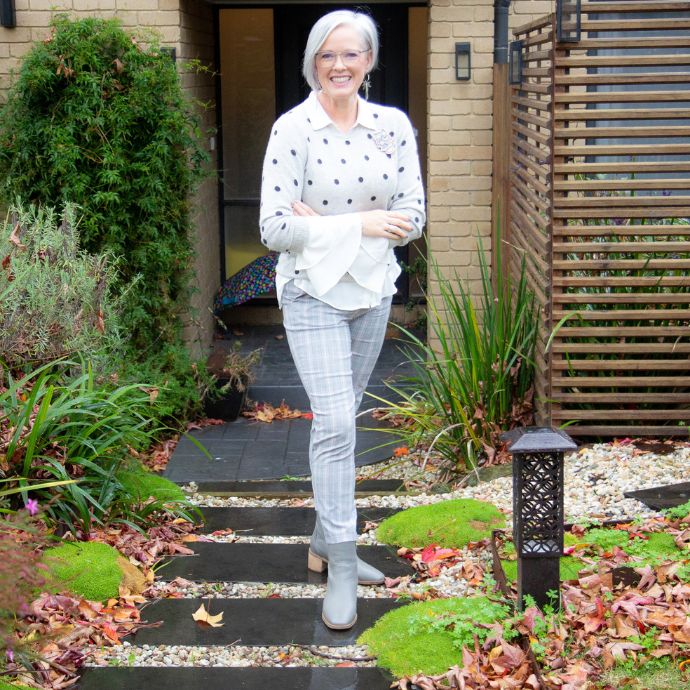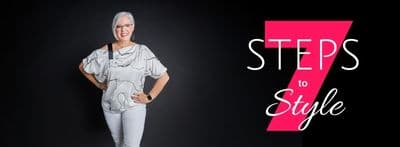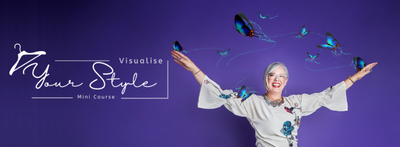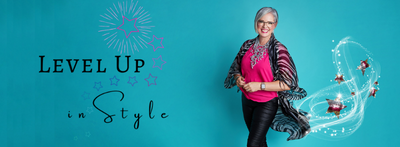
Reader Question: How do I create my own figure flattery guidelines when I have to take into consideration my body shape, my body proportions and my body variations?
This is what I call the body equation and here are tips on how you can put together your own set of personalised guidelines, as you are a unique human and general body shape guidelines are just that, general guidelines not specific recommendations that you have to follow or that all of them will work for you!
What is most important when collating your own set of guidelines is what matters most to you, and only you can decide this! Then we need to figure out how to put the information from the three different aspects of the body equation together.
Let’s Start with Body Shape
Body shape is your silhouette – front on!
Body shape tells you:
- Where to put horizontal lines, which either balance or broaden.
- Where to add vertical lines, to elongate or slim
- Where to add details to draw attention and create focal points
- Where to keep plain and free of details so as not to draw attention
- The overall silhouette of the outfit
For example, if you’ve got an A-shape body, you will add horizontal details above the bust to balance your hips, and also at your knees and below, again to balance hips, plus at your waist as you highlight your small waist.
You may want to add vertical details below your waist to elongate and slim your thighs, hips and legs.
You will draw attention with details above the waist.
Your overall silhouette is best in a fit and flare shape, as this follows your curves and creates the balance you are after. Not everyone fits a standard body shape, there are some who are a little bit of one and a little bit of another, and then you need to combine elements of both.
But how long your skirt should be or where your tops should end is down to your body proportions.
Let’s Discuss Body Proportions
Body proportions are your vertical body shape and give you guidelines on the best lengths of all your hems
- Sleeve lengths
- Top lengths
- Jacket lengths
- Skirt lengths
- Trouser lengths
- Necklace lengths
There are some very quick guidelines you can follow if you don’t want to get into too much detail:
Short legs? Short skirts, short tops, short sleeves, short necklaces.
Long legs? Longer skirts, longer tops, longer jackets, longer sleeves, longer necklaces
Balanced? Then go midway – neither long nor short! Go midway!
For example, is the midi-length skirt great for you? This comes into your body proportions, not body shape!
Here’s how to measure your body proportions.
Then There are Your Body Variations
These are all the other parts of you that are not taken into account in body shape or proportions such as:
- Bust size
- Neck length and width
- Petite or Tall
- Calves
- Upper Arms
- Curvy Tummy
- Square or sloping shoulders
and I could go on and on… and on.
These are all assets, it’s just that sometimes we want to highlight those assets, and other times we want to distract or camouflage from them. You get to choose!
This is why creating your own figure flattery guidelines is important, as you may be an A shape with a small bust, or an A shape with a large bust, you will use some of the same guidelines, but not all, and you will adapt them to suit your unique shape and proportions.
Or you may be petite, and most guidelines for petites assume you have short legs, but you may actually be a long-legged petite so need to create your own set of guidelines.
Your body variations may impact on the body shape and proportions in different ways.
To Put it All Together You Need to Become a Magician
Using the tools of the clothing magician – line (verticals, horizontals etc.) design details and scale, you can create illusions that trick the eye, that distract and that make you look balanced and in harmony.
- Use horizontal lines to balance or broaden
- Use vertical lines to elongate or slim
- Use diagonal lines to create movement and move the eye either away from something, or towards something
- Use details to add emphasis and focal points
- Use colour to draw attention or make an area recede
- Use scale to balance

Focal points: Pattern on the upper body plus owl brooch above the bust Vertical lines in the pattern on my pants – elongate them further Blend shoe colour to pants so not to make legs look shorter Curved hem on top discreetly covers my tummy without making legs look shorter Fluted sleeves create focal points Straight silhouette follows my H shape body and doesn’t draw attention to my lack of waist
Create Your Own Personalised Style Guidelines
- Decide what you want to focus on – add detail and interest to that area – don’t forget this is the distraction element of the clothing magician and is as important as the illusion elements!
- Decide if you want to elongate an area of your body – then add verticals to that area
- Decide if you want to balance an area – then add horizontals to the narrower area to create balance
- Decide if you want to make an area boring and not draw attention – then keep it plain and free of details, maybe use a darker colour to make it recede, and avoid putting horizontal lines on or next to that area
- Discover your body proportions, then use them to find your most flattering hem lengths
- Decide on your overall scale as well as scale of different aspects of your body and features, then use larger or smaller scale elements or details to balance
In the end, you need to decide what it is that matters most to you and start with the recommendations for that, and then go from there. Experimentation is the best way of really figuring out your own figure flattery guidelines as you can play with hem lengths and shapes and focal points to find what really works for your beautiful and unique body and then create your own set of guidelines from there.
If you’ve no idea of your shape and want to start there – take my body shape calculator quiz and download your free body shape bible. If you’d like my professional opinion on your shape, and proportions and what flatters – this is part of my 7 Steps to Style program (along with discovering your best colours plus how your personality influences all your style choices). It’s the full style education you never got at school but will help you understand what does and doesn’t work for you today.
More Tips on Helping You Define Your Personalised Figure Flattery Guidelines
What Guidelines to Follow When Your Body Shape isn’t “Standard”
If You’d Like to Define Your Style and Discover Your Colours
If you’re sick of wasting money on clothes that don’t work and you know there is a better way, then join my 7 Steps to Style program and get the right information for you and your style.
Subscribe to my Podcast
You can now get these videos as podcasts subscribe and never miss an episode
Send me Your Questions
Please email me your questions to be included in my Q&A Lucky Dip!







